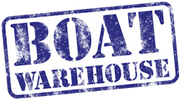-

Matromarine
Matro Inline Blower
Matro Inline Blower Compact and simple design. Flexible installation. Low power consumption. Quiet operation. Five blade design maximises flow and performance. Long motor lifetime from powerful airflow coiling...
-

TMC Marine Equipment
Electric Impeller Pump - TMC
A medium duty bronze body 12 volt general purpose pump suitable for salt or fresh water. This pump has a flexible rubber impeller, bronze body, in-line fuse holder with 10 amp fuse and a coated base plate with rubber vibration dampening grommets. Ports...
-

Jabsco
Diesel Fuel Transfer Vane Pumps - High Volume - 50LPM
A range of high quality, high volume, heavy duty sliding vane pumps with continuously rated motors for fast fuel transfer. Vane pump operation is impervious to diesel and oils. A Suitable for diesel, kerosene, paraffin and hydraulic oils up to 50 centi...
-

Jabsco
Diesel Fuel Transfer Vane Pumps - High Volume - 35LPM
A range of high quality, high volume, heavy duty sliding vane pumps with continuously rated motors for fast fuel transfer. Vane pump operation is impervious to diesel and oils. Suitable for diesel, kerosene, paraffin and hydraulic oils up to 50...
-

Jabsco
JABSCO Next Gen Par-Max 3 Freshwater Pressure Pump - 11 LPM
All NEW "Next Generation" type pressure pumps with the latest technology used to provide high flow pumping power, high pressure and long pump life. Our most popular freshwater pressure pump - the ideal pump for providing freshwater on pleasure craft up...
Plumbing, Sinks, Toilets & Pumps
The plumbing system on a boat is responsible for providing fresh water for drinking, cooking, and bathing, as well as for disposing of wastewater. The system typically consists of a freshwater tank, a wastewater tank, a pump, and a variety of pipes and fittings.
- Freshwater tank: The freshwater tank is where the fresh water is stored. It is typically made of plastic or fiberglass, and it is located in a secure location below the waterline. The tank is filled with fresh water from a shoreside dock or from a watermaker.
- Wastewater tank: The wastewater tank is where the wastewater is stored. It is typically made of plastic or fiberglass, and it is located in a secure location below the waterline. The tank is emptied by pumping the contents overboard.
- Pump: The pump is used to move the water between the tanks and to the faucets and appliances. It is typically an electric pump, but it can also be a manual pump.
- Pipes and fittings: The pipes and fittings are used to connect the tanks, the pump, and the faucets and appliances. They are typically made of plastic or stainless steel.
In addition to the basic plumbing system, some boats also have a hot water system. The hot water system typically consists of a water heater, a pump, and a variety of pipes and fittings. The water heater is used to heat the water in the freshwater tank. The hot water is then pumped to the faucets and appliances.
The sinks, toilets, and pumps on a boat are all connected to the plumbing system. The sinks are used for washing dishes, hands, and faces. The toilets are used for disposing of human waste. The pumps are used to move the water between the tanks and to the faucets and appliances.
The plumbing system on a boat is an important part of the boat's overall systems. It is important to keep the system clean and well-maintained to ensure that it works properly.
Here are some additional details about the plumbing, sinks, toilets, and pumps on a boat:
- Plumbing: The plumbing on a boat is typically made of plastic or stainless steel. It is important to use materials that are resistant to corrosion and that will not leach harmful chemicals into the water.
- Sinks: The sinks on a boat are typically made of stainless steel or fiberglass. They should be easy to clean and should be able to withstand the elements.
- Toilets: The toilets on a boat are typically either marine toilets or composting toilets. Marine toilets use a holding tank to store the waste, which is then pumped overboard. Composting toilets use a biological process to break down the waste, which is then stored in a container until it can be disposed of onshore.
- Pumps: The pumps on a boat are typically electric pumps. They should be able to move a large volume of water quickly and efficiently.
It is important to keep the plumbing, sinks, toilets, and pumps on a boat clean and well-maintained. This will help to ensure that the system works properly and that the water is safe to use.





